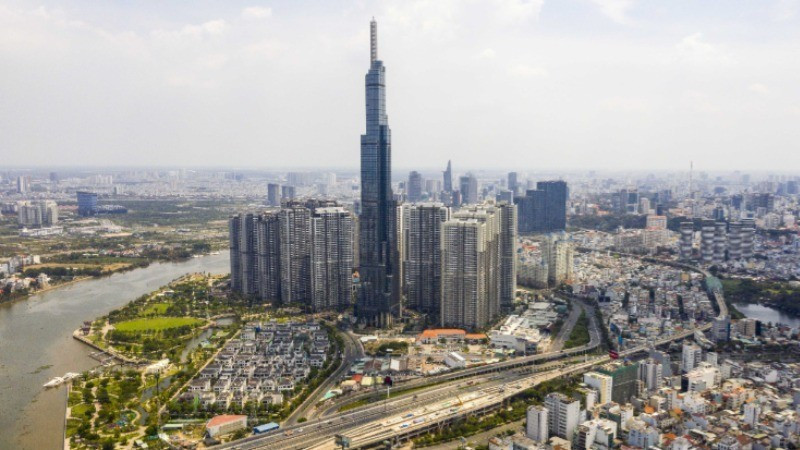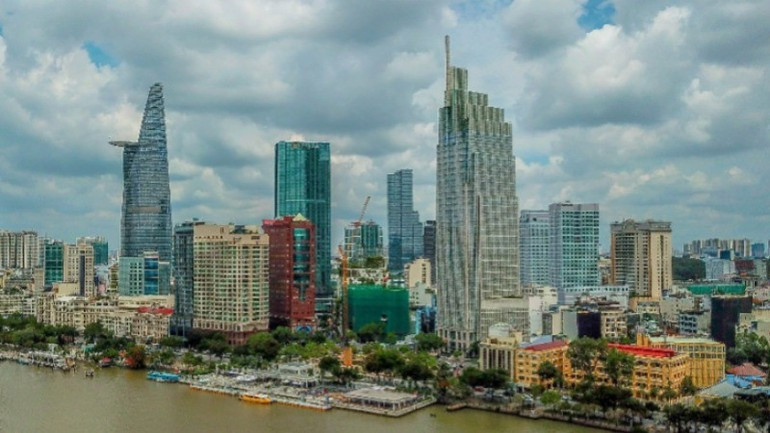Planning vision and economic development drivers for Ho Chi Minh City after merger
Expanding Ho Chi Minh City’s administrative boundaries alone is not enough; what truly matters is restructuring urban space using a multi-centre approach, establishing new growth poles, and enhancing connectivity with neighbouring regions.

This was the central message at the seminar titled “Planning Vision and Economic Development Drivers for the New Ho Chi Minh City”, co-organised by the Ho Chi Minh City Development Research Institute (HIDS) and the University of Economics Ho Chi Minh City (UEH) on June 17.
The seminar was held in the context of a merger of Ho Chi Minh City, Binh Duong Province, and Ba Ria–Vung Tau Province into a new administrative unit—the New Ho Chi Minh City—with its political and administrative centre located in the current Ho Chi Minh City area.
A historic opportunity to shape the new Ho Chi Minh City
Speaking at the seminar, Professor Su Dinh Thanh, Rector of UEH, noted that 2025 marks a significant milestone in Ho Chi Minh City’s development journey.
The restructuring of provincial-level administrative units presents a historic opportunity to establish a new Ho Chi Minh City—with a redefined spatial layout and boundaries, as well as entirely new development models, strategic visions, and growth approaches.
The New Ho Chi Minh City is envisioned as a multi-centre mega-city, a major growth pole, and a leading hub for economics, finance, science and technology, and smart logistics in Southeast Asia.
To achieve this vision, “we need a systematic, long-term planning strategy, involving experts, academics, and the community to co-create solutions, exchange knowledge, and build a modern, liveable city in the era of digital transformation and sustainable development,” Professor Su emphasised.
To realise this vision, “we need a systematic, long-term planning strategy, together with the participation of experts, academics, and the community in creating solutions, sharing knowledge and experience to build a modern, liveable city in the era of digital transformation and sustainable development,” Professor Su Dinh Thanh emphasised.
A new mindset for planning the New Ho Chi Minh City
At the seminar, experts stressed that the new Ho Chi Minh City is not simply a geographical expansion but is expected to become a smart, modern mega-city with a multi-centre structure, integrated infrastructure, smart logistics, a digital economy, and a green economy as its foundational pillars.
They reiterated that merely redrawing administrative boundaries is insufficient. Instead, urban restructuring must focus on establishing new growth poles and fostering close integration with neighbouring regions through a multi-centre development approach.
This perspective goes beyond traditional planning paradigms, which have often been constrained by administrative lines, by promoting flexible, multi-tiered regional governance models suited to today’s development context.
Dr Le Quoc Hung, Deputy Director of the National Institute for Urban and Rural Planning, emphasised that to realise the national vision and stimulate new growth, a landmark strategic decision has been made: the formation of the new Ho Chi Minh City mega-city through the merger of Ho Chi Minh City, Binh Duong Province, and Ba Ria-Vung Tau Province. Following this merger, the new city is expected to emerge as a leading mega-city in the Asia-Pacific region.
However, “we must understand clearly that this development triangle is not just about economic synergy. It will also be a critical test of integrated governance, the ability to harmonise interests, and overcome localism,” Dr Hung noted.
Experts also emphasised that planning for the new Ho Chi Minh City must be grounded in practical data and a holistic view of economic, social, infrastructural, and regional connectivity factors across all three localities. Only by accurately defining the roles and functions of each sub-region can feasible, development-driven planning be formulated.
Particularly, a new governance institution with pilot, flexible, and consensual mechanisms is a prerequisite for realising this planning model. Only when planning is linked to institutional innovation can Ho Chi Minh City after the merger fully unleash its potential and create a smart, modern, and sustainably developing urban space.

A new development model
According to experts, the new Ho Chi Minh City must rely on breakthrough development drivers, including the creation of offshore wind energy clusters, the construction of a modern logistics ecosystem, and the promotion of innovation. These drivers must be supported by both physical and digital infrastructure to lay the foundation for green growth and a digital economy.
Notably, nearly 50% of Viet Nam’s private enterprises are located in Ho Chi Minh City, Binh Duong, and Ba Ria-Vung Tau. Therefore, eliminating barriers related to institutions, land, and capital is essential to unlocking the potential of the private sector.
The new Ho Chi Minh City must also foster a dynamic innovation ecosystem—comprising legal sandboxes, technology testing zones, inter-sectoral innovation centres, and strong university-business linkages—to create favourable conditions for nurturing and commercialising creative ideas.
To ensure sustainable development and maintain its role as the nation’s economic engine, addressing supply chain bottlenecks is an urgent priority. The city needs to invest significantly in inland container depot (ICD) systems, promote digital logistics, and develop multimodal seaport networks connecting the inner city with key economic regions.
Looking outward to the sea—especially by leveraging the potential of the Cai Mep-Thi Vai area—will position the post-merger Ho Chi Minh City as a maritime logistics hub, an energy centre, an industrial port complex, and a key river tourism destination.
At the same time, the city should prioritise developing a central business district (CBD) integrated with an international financial centre (IFC), drawing lessons from global cities such as Tokyo, Singapore, and Kuala Lumpur.
Achieving this requires comprehensive development of the service ecosystem, transportation infrastructure, housing, and overall quality of life—laying the foundation for a modern financial centre with strong regional and global competitiveness.








